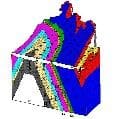What’s in my Water … and Where is it from?

Intended Learners
What will students learn in your course?
Students will learn what substances occur naturally in water
Students will learn contaminants and lifeforms may be found in drinking water
Students will learn about the California aqueducts (California, Los Angeles, and Colorado River)
Students will learn about artificial recharge in the Orange County Water District
Students will learn about the Orange Co. seawater barriers using treated waste water in Orange County Water District Groundwater Replenishment System, OCWD-GRS
Students will learn about desalination alternatives / ongoing plans
What are the requirements or prerequisites for taking your course?
An interest in learning about water supply and water quality
Chemistry not required but the course will enhance chemistry learning!!!
Who is this course for?
General public and
Those in the environmental professions
Water utility planners and operators
Those in water resource management
Course landing page
Course title
What’s in my Water … and Where is it from?
Course subtitle
A perspective for southern California
Course description
In this 9 part video series, Dr Hoaglund discusses general water chemistry and what it indicates about the water’s origins, also known as its provenance. He then provides a perspective on water sources for Southern California, and the issues surrounding water management.
This course was developed as part of the mission of the non-profit Carbon Negative Water and Energy founded by Dr. John Hoaglund. If you have benefitted from the information, please consider making a donation. If you’re part of the 98% that can’t make a donation, please massively forward the website and this course to your network … it makes a difference.
Southern California water is supplied from three main sources, the aqueducts, groundwater, and desalination. The groundwater resource is comprised of “runoff” from the mountains, as well as aqueduct water that is “artificially recharged” into the groundwater system in spreading basins, constructed within the river channels and overflow banks. Desalination is used to treat waste water into freshwater, which is then put into the groundwater system to form “seawater barriers,” raising fresh groundwater levels in a “groundwater mound” that inhibits “saltwater encroachment” from the ocean. All of the deliveries of water and its management requires energy. Desalination of seawater has become energetically competitive with aqueduct pumping energy, enough to be cost competitive. As a result, ocean desalination is becoming an increasing supplier of southern California’s potable water needs.
Part I: Ions
Part II: Dissolved Solids and Biological Considerations
Part III: Possible Chemical and Radiological Contaminants
Part IV: Energy in Water? A Comparison of Water Sources
Part V: Orange County Groundwater Management
Part VI: Desalination and Seawater Barriers
Part VII: An Overview of the Aqueducts
Part VIII: The Los Angeles Aqueduct
Part IX: The California and Colorado River Aqueducts and Delivery to Orange County
Promotional Video Name
[ No promo video: Introduction included in first video ]
Promotional Image Name
Whats In My Water Promo Socal Water Collage.jpg
